For this edition of The No-Till Passport, International No-Till Legend, Roberto Peiretti , shares some key points and slides from a recent presentation on Conservation Agriculture Systems in Argentina and the important role that no-tilling plays in the world of conservation agriculture. Roberto Peiretti is included in Frank Lessiter's List of No-Till Legends which can be viewed here.
The evolution of demand for food and the availability of farmland to produce the adequate amount is a growing concern for many countries. Tillage-based agriculture has resulted in soil degradation and made this issue far worse. No-Till farming systems as a key part of conservation agriculture systems have evolved to help improve agriculture around the world. This has also resulted in improved water management and less erosion. Argentina has mostly been trending in the right direction over the last several decades in terms of adopting no-till and conservation agriculture systems.
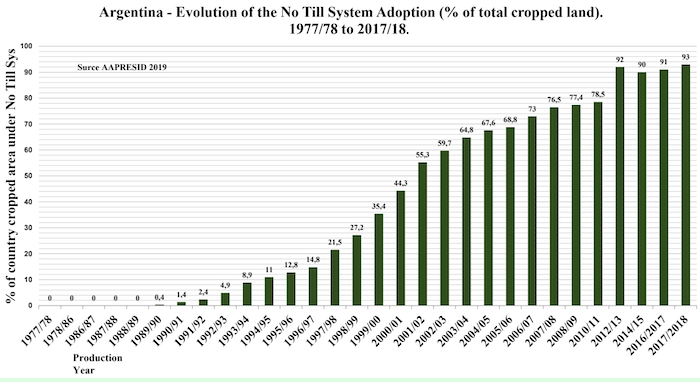
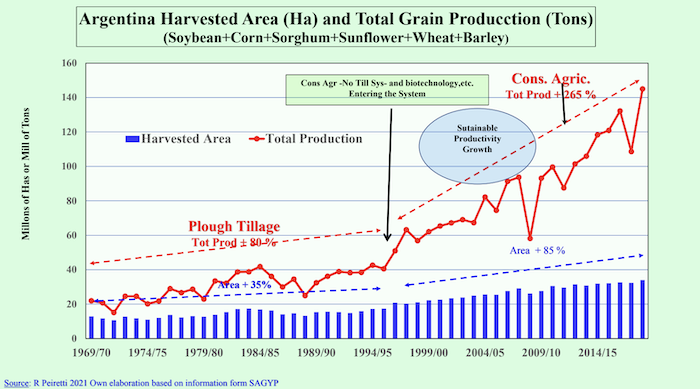
Note: 1 hectare equals roughly 2.5 acres.
Benefits & Lessons Learned
The improvement of the farming system as a whole and the increase in total production in a sustainable manner does not represent the end goal but only a road to be followed to continue improving the way that we farm in the future.
Similar conservation agriculture practices have also been adopted in other South American countries as well as other countries and continents around the world.
As of the year 2021, the amount of acres of land being farmed through conservation agriculture systems was estimated to be approaching 494 million acres.
Conclusions
After 40 years of managing my soils under the conservation agriculture principles, they became so healthy and soft that I no longer need a shovel to pick up a handful of my soil.
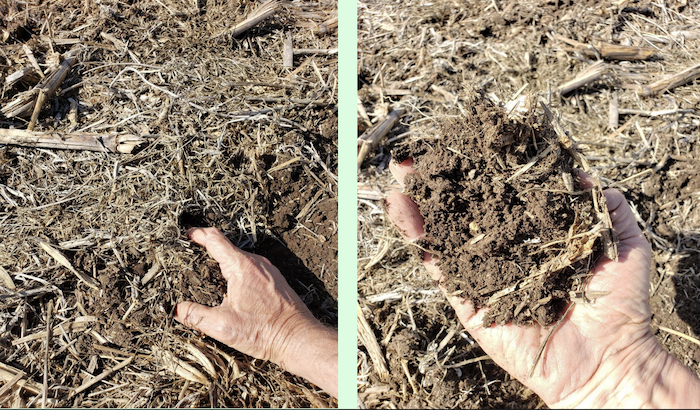
Conservation agriculture is not only useful for increasing productivity, total production and profits obtained in a sustainable way, but it can also be helpful in repairing the damages from past years of tillage. At the end of the day, this leads to what I call the "beyond sustainability stage."
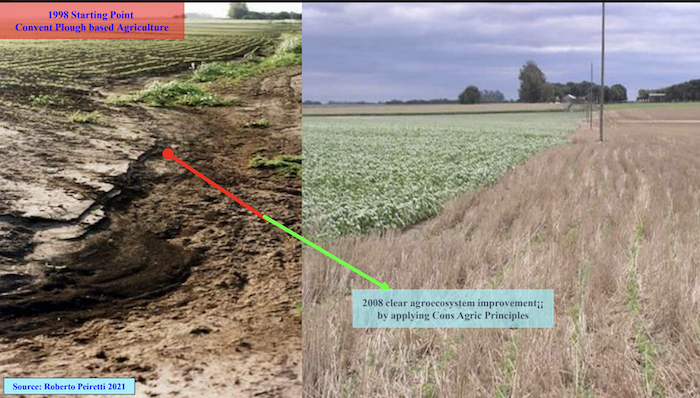
One final note that is important to remember is that while aiming for mainstream adoption of conservation agriculture into a diverse group of global agro-ecosystems, there is no such thing as one valid sure-fire way to achieve this goal. Instead, we must remember that conservation agriculture is pillared on 3 main principles which have universal validity but still demand some degree of local adaption.
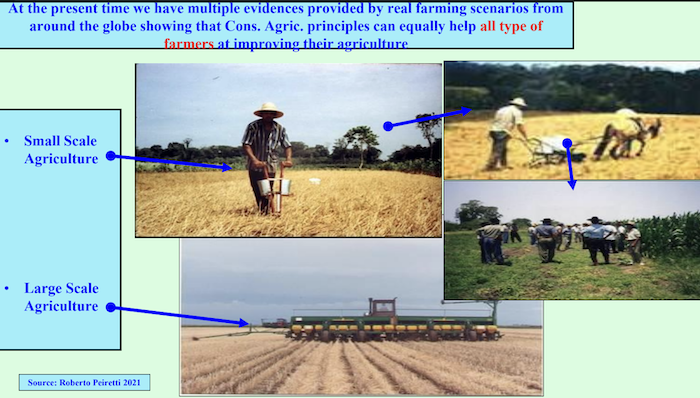
If we achieve the goal of developing and sustaining the ability to provide enough food for all of humanity, we will have a meaningful and happier life while simultaneously constructing a better future for our children and all the future generations to come.
The No-Till Passport series is brought to you by Martin Industries.
Since 1991, Martin Industries has designed, manufactured and sold leading agriculture equipment across the U.S. and Canada. Known for Martin-Till planter attachments, the company has expanded to include a five-step planting system, closing wheel systems, twisted drag chains, fertilizer openers and more in their lineup. Their durable and reliable planter attachments are making it possible for more and more farmers to plant into higher levels of residue.
Related Content
Argentine Agronomist Brings Passion for No-Till to Illinois,Roberto Peiretti’s 20 Tips for a Dynamic No-Till System,
5 International No-Till Legends Honored

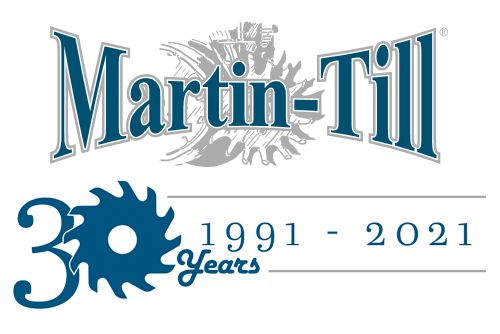





Post a comment
Report Abusive Comment